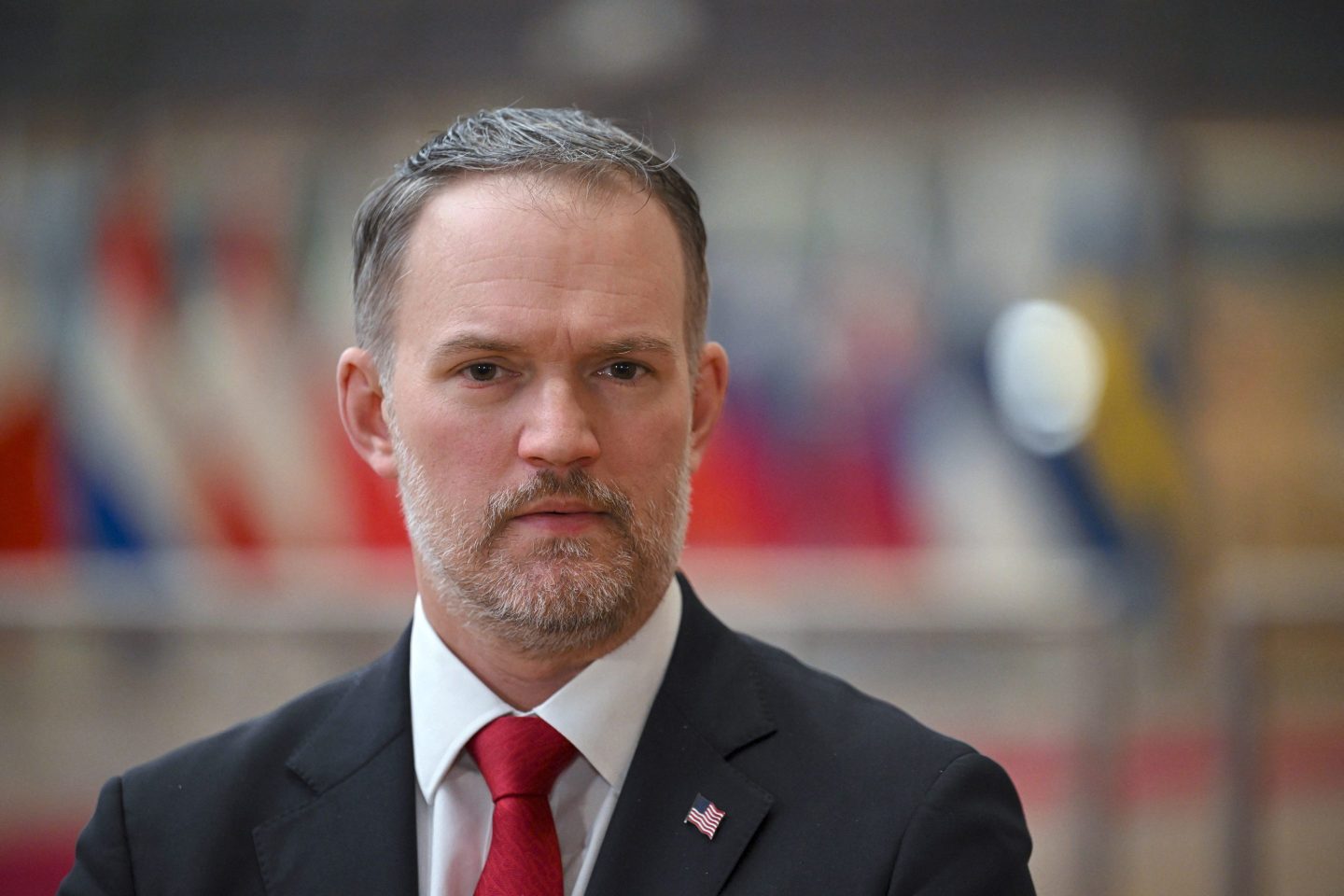This week marks the culmination of an unusually smooth executive transition for a Wall Street bank, as Morgan Stanley’s new CEO Ted Pick stepped into his new role after outgoing chief James Gorman left.
The decision, which was announced in May, was hailed as a model transition because it involved little internal turmoil and avoided the infighting that can sometimes accompany corporate succession. Pick took over from Gorman on New Year’s day, with Gorman staying on as executive chairman.
“I do not want to be CEO anymore,” Gorman told the Financial Times. “I’ve loved it. I’ve loved all of it. I’ve done it for 14 years, that’s enough.”
Gorman is already adjusting to his new downsized role. As CEO, at the beginning of each year, he would make a handwritten list of his priorities for the 12 months ahead. When asked during a Bloomberg interview earlier this week how that list might change now that he’s executive chairman and had stepped away from overseeing Morgan Stanley’s day-to-day operations, Gorman replied: “I didn’t write it this year.”
While no longer a chief executive, Gorman will continue serving in top corporate posts in addition to his Morgan Stanley executive chairmanship, having been named to Disney’s board. In that role, Gorman may assist Disney with eventually finding a successor for its CEO, Bob Iger. Disney has struggled with doing so in recent years, leading to Iger’s returning for a second time as CEO in November 2022 after his successor, Bob Chapek, faltered.
Gorman announced his intention to step down in May, saying he would do so within the next 12 months. In October, Morgan Stanley announced that Pick, who was then co-president, would succeed Gorman at the beginning of this year.
During an almost decade-and-a-half tenure, Gorman turned Morgan Stanley into the envy of Wall Street. The bank weathered the uncertainty and public distrust engendered by the 2008 financial crisis; outgrew virtually all of its European competitors such as Credit Suisse, Barclays, and Deutsche Bank; and made several big-money acquisitions to diversify from its trading and investment banking businesses.
Since January 2010, when Gorman was appointed, Morgan Stanley’s stock has more than tripled, from around $30 to $92.39 as of Thursday. The bank’s annual net revenues also soared from $16.4 billion in Gorman’s first year to $53.7 billion in 2022, the last full year of financial information available.
In his Financial Times interview, Gorman rated his Morgan Stanley CEO tenure as an A-. Going higher would be “immodest,” while going any lower would be “false modesty,” he told the newspaper in December.
Much of Morgan Stanley’s new growth can be attributed to Gorman’s early efforts to expand the bank’s wealth and asset management business, which were previously afterthoughts to its primary banking and trading efforts. He still believes wealth and asset management is critical to growing Morgan Stanley internationally.
“There are a lot of wealthy people in the world,” he said in the Bloomberg interview.
As he reflected on his time at Morgan Stanley, Gorman exuded confidence.
“It might sound immodest but I don’t think we made a lot of mistakes,” he told Bloomberg.
Yet under his watch, Morgan Stanley had to pay several large fines following regulatory investigations. The largest came in 2022 when the bank agreed to pay $200 million to U.S. regulators after some of its employees engaged in improper record keeping when they discussed trades outside of sanctioned communications channels. Just a month later the SEC fined Morgan Stanley again as part of a $35 million settlement for failing to properly protect the data of 15 million customers.
Additionally, Morgan Stanley lost $911 million when the family office of Archegos Capital Management went under after it couldn’t cover a series of margin calls, which triggered a fire sale. Morgan Stanley, realizing Archegos was about to collapse, had to sell blocks of shares at a loss to mitigate the damage to its own balance sheet. And like many investors, the bank has suffered hundreds of millions of dollars in losses on commercial real estate loans in the aftermath of the pandemic.
Instead, Gorman prefers to focus on the wins, citing the acquisitions that enabled the bank’s asset and wealth management push. In February 2020, just weeks before the pandemic struck the U.S., Morgan Stanley bought brokerage app E-Trade for $13 billion. “I think they’re jealous,” Gorman said of other Wall Street banks that missed out on the deal. Undaunted by the pandemic, Gorman continued his shopping spree in October 2020, buying investment firm Eaton Vance for $7 billion.
“I felt back then that we had to act, and we had to act aggressively,” he said of his early days as CEO and his turnaround plan. “And I knew that whatever we chose to do there would be critics. That didn’t bother me one little bit.”
Despite the raft of successful business decisions, Morgan Stanley did take some hits in Gorman’s 14 years on the job. Morgan Stanley lost about $911 million when the family office Archegos Capital Management went under after it couldn’t cover a series of margin calls, which triggered a fire sale. And like many investors, it faced some heavy losses in any of its office real estate assets in the aftermath of the pandemic.













